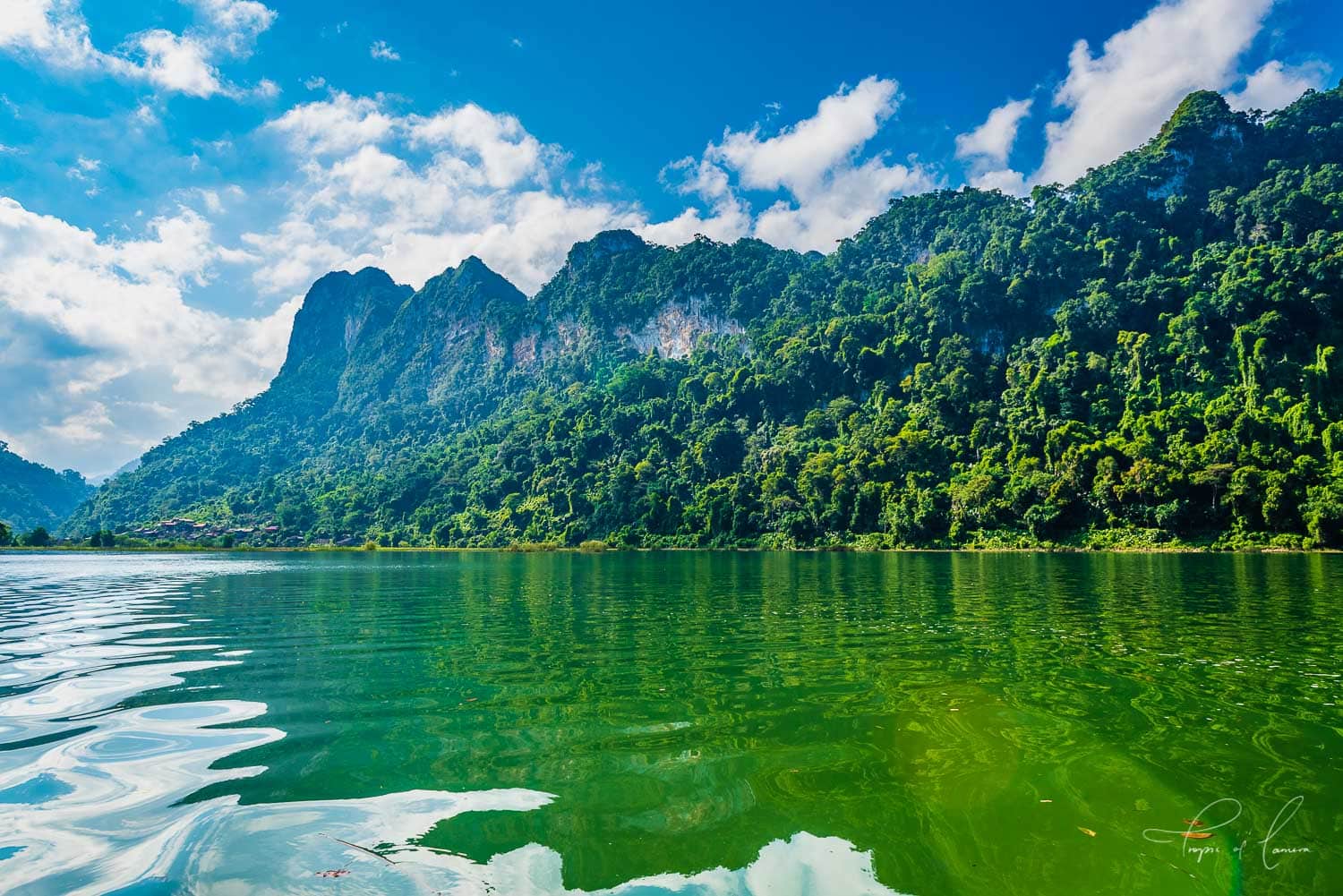My driver stops for directions four times on the road to Ba Be National Park. There are no directions, no signs. Only a thin line of winding asphalt through the mountains, the occasional road marker to the next town. The peaks undulate like a string of dropped pearls. We swerve past trucks on the narrow roads, the tinny beep of the car punctuating sharp turns. Snub nosed mongrels wander the mountain, their cognac paws appearing as if dipped in honey.
I watch the GPS dot get closer on the downloaded map to a patch of green with a blue lake in the middle. Finally, two blue signs point towards the entrance to Ba Be National Park. I pay my entrance fee, 46,000 dong, and we’re passed by a little girl riding a pink bicycle down the slick hill.
My first glimpse of the lake is through trees, a glimmering blue in the stark sunlight.
Ba Be Lake
Ba Be is Vietnam’s eighth national park, established in 1992. Ba Be means ‘Three Lakes’ in the local language, but it is one large lake, stretching over eight kilometres.
Located six hours from Hanoi, it’s most easily accessed by private driver, which you can organise in Hanoi for around $180 USD. Where Sapa is more well known for trekking, and Ha Long Bay is filled with tourists, Ba Be National Park is just as beautiful without the crowds.
Homestays congregate in a small village, each advertising Wi-Fi, trekking and boat services. Accommodation is simple in cedar walled rooms with floral blankets and mosquito nets. My homestay looks out across the entire valley towards the lake. The watery squares of rice fields form a patchwork against the green shards of rice ready for harvest. It’s enough to sit here and watch the world go by, drinking bitter green tea. I’m handed the white segments of a Pomelo, peeled and eaten dipped in salt.
While cycling and trekking activities abound, the best way to see Ba Be National Park is by boat. A tour of the lake takes 5-6 hours, on metal punt. Don’t expect an English-speaking guide unless you book one.
I jump onto the worn boat from the dock, a muddy parking spot next to a rice field and two sandy volleyball courts. The engine shudders through my bones. Lifejackets lie unused in a pile; I’m reassured by their presence, but I probably should wear one. As we escape the inlet of the village, the lake opens under an azulene sky against the stark cliffs of Ba Be. Butterflies float through the open boat, returning to their trajectory across the lake. How they fly such long distances is beyond my comprehension.
We pass grazing buffalo and the nesting herons that lay their eggs in the area. They launch into the air, careening like an ink painting against the mountains.
Puong Cave
Two hours in, a cave looms in a grand arch above the water. The Nang River runs right through Puong Cave, but it’s no theme park ride. The cave is home to thousands of bats.
I’m climbing the rocky stairs when I hear them: the tiny chittering in the dark, like a thousand invisible mice. Pitch black, footpath illuminated only by the light from a phone, I almost stumble in the dark. I try for some long exposures to glimpse those elusive animals. Despite the sophistication of my camera to see beyond the human eye, all it captures are stalactites and shadowy crevasses.
Further around the cave, light illuminates visitors in silhouettes reminiscent of an adventure movie, broad-brimmed hats shafted against the light. This is only one of many caves in the area, etched into the stark cliff faces. I return to the boat, still hoping for a glimpse of a bat, but all disappears in the darkness above me.
Dau Dang Waterfall
From Puong Cave, we follow the current down the Dang River. At the local village, women in conical hats carry fruit past water buffalo. Along the river, men and women lay nets, perhaps for fish, perhaps for the snails I’m offered at lunch.
The restaurant owner picks a live fish from his pool, disappears into the kitchen. Freshly cooked fish comes out, along with tofu in tomato sauce, slices of cold pork, sautéed morning glory in garlic. I eat next to baskets of live snails, some trying to escape their lunch fate.
After lunch I take a short walk down to Dau Dang waterfall, a meandering path where I am led by the sound of the falls on my left. Down around the stairs, past closed snack stalls covered in red and blue striped tarpaulins. I arrive as a sun shower begins, the rain cool on my skin after the heat of the day. It’s a short-lived relief while watching the falls hammer down against the blue sky.
Fairy Pond
The boat returns the way it came towards the main lake, turning off into what appears to be a dead end. At the moorings, yellow butterflies congregate in a pile, leaping off into the air, surrounding me like fireflies. I stop and stand in the middle of it all, hands up in wonder. They dance around me, leaping through the air. A whirlwind of butterflies and I am at its centre.
I take the short walk to the Fairy Pond, past snack vendors selling purple yams and dried kippers on skewers in neat rows of four, to a still lake set against a mountain. Compared to Ba Be, it’s only small, but the jungle reflects in the water, only broken by hovering dragonflies and mosquitoes.
An Ma Temple
The boat turns its aquamarine nose back to the congregation of homestays on the lakeside. One final stop: An Ma Temple. My feet almost slip on the mossy stairs winding around the small island. Women make offerings of yellow Buddha’s fingers in front of a gold shrine. Colourful flags flap in the lowering sun. No priests to be seen. I wonder how they would live on this lonely island in the middle of a remote lake? It’s enough for me to be here for a day and go back to my cities and people.
As the boat makes its final drive towards the village, I wave at a couple dressed for their wedding day. The photographer directs their poses on Widow Island against the arching mountains. The irony’s not lost on me.
Jumping off the boat, my legs wobbly from the shuddering engine, I walk down the street in search of a cool snack. The owner hacks me a pineapple with more grace than I’ll ever achieve in my kitchen. And she’s using a machete. A rainbow emerges briefly over the mountains, then disappears in the spat-spat-spat of the predicted thunderstorm. Yet the sun returns for sunset, against blue-black clouds it dips past the mountains that rise from Ba Be Lake.



